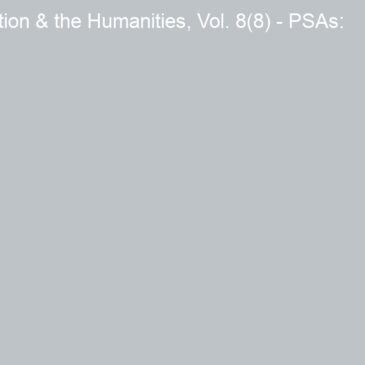Non-profit and government agencies create public service announcements (PSAs) that major media outlets broadcast for free. They have the objectives of raising awareness and changing public attitudes and behavior towards a social issue. Scare tactics in anti-drug campaigns are similar to the “shockvertising” we’ve seen in some corporate advertising campaigns (as discussed in Addiction & the Humanities Vol. 8(7)). In this final segment of a three-part series on addiction and advertising, we examine scare tactics used in four anti-drug PSA campaigns.
The first PSA from Finland channels the experience of having a parent who abuses alcohol. Filmed from the child’s perspective, the commercial casts parents who binge drink as terrifying monsters.
http://www.youtube.com/watch?v=XwdUXS94yNk
The second campaign from the National Institute of Drug Abuse (NIDA) is entitled “Keep Your Brain Healthy” and features scans of so-called addicts’ brains compared to non-addicts’ brains. It shows scans without explaining them, in the attempt to spook less-informed viewers into believing that any drug use permanently alters brain activity. In addition to this, it presents a drug use-equals-addiction-and-disease message in an oversimplified and condemning way.
http://www.youtube.com/watch?v=sfM53C4Vw48&feature=player_embedded
Earlier this year, the Center for Disease Control and Prevention (CDC) launched an anti-smoking campaign. The $54 million ad campaign, called “Tips from Former Smokers”, is the government's first mass-media national anti-smoking campaign in 30 years. Our third PSA features former smokers with horrific smoking-related health problems and provides “tips” about how to survive as a former smoker.
www.youtube.com/watch?feature=player_embedded&v=5zWB4dLYChM
Finally, The Meth Project is a large-scale prevention program aimed at reducing meth use by partnering with states to spread public service messaging, public policy, and community outreach. (For more information about The Meth Project, see Addiction & the Humanities Vol. 2(4)). Filmmaker Darren Aronofsky created a series of disturbing commercials for The Meth Project, similar in tone to his film Requiem for a Dream. In this advertisement, entitled “Boyfriend,” a female narrator tells the story of her descent into prostitution as a result of her meth addiction.
http://www.youtube.com/watch?v=9ZGRzBuh4XY&feature=player_embedded
These four ad campaigns claim that, by taking a no-holds-barred approach and showing the “real” consequences of drug abuse and addiction, they are preventing potential users from starting and motivating current users to quit. They use graphic imagery to achieve emotional arousal, which might be upsetting to some viewers. Some research suggests that fear and guilt arousal might not curtail behavioral intentions to use drugs, and might even have the opposite effect (Erceg-Hurn, 2008; Harris, 2007; Hornik, 2008). For example, researchers did not find evidence that reductions in methamphetamine abuse in Montana were caused by the advertising campaign. In fact, their data suggested that teens’ exposure to the ads has slowed a downward trend in methamphetamine abuse (Anderson, 2010; Erceg-Hurn, 2008).
The last two installments of this series showed that addiction and other mental health issues continue to be sensationalized and oversimplified in commercial advertisements. It appears that government-sponsored advertisements share many of these same problems. Using provocative and disturbing imagery as part of anti-drug advertisements might be unwarranted if it has not been demonstrated to be effective. More research needs to determine whether these kinds of advertisements are successful in preventing harmful drug use and promoting treatment-seeking behavior. Absent careful evaluation demonstrating the efficacy of prevention efforts, the potential for unintended consequences is great. Consequently, vigilance and careful evaluations are key components of effective interventions for addiction.
– Kat Belkin
What do you think? Please use the comment link below to provide feedback on this article.
References
Anderson, D. M. (2010). Does information matter? The effect of the Meth Project on meth use among adults. . Journal of Health Economics, 29(5), 732-742.
Erceg-Hurn, D. (2008). Drugs, money, and graphic ads: A critical review of the Montana Meth Project. Prevention Science, 9(4), 256-263.
Harris, M. S. (2007). The role of emotion in anti-drug PSA: Investigating the impact of guilt arousal on perceived message effectiveness and behavioral intentions to use drugs. Dissertation Abstracts International Section A: Humanities and Social Sciences, 68(4a), 1202.
Hornik, R., Jacobsohn, L., Orwin, R., Piesse, A., & Kalton, G. . (2008). Effects of the National Youth Anti-Drug Media Campaign on youths. American Journal of Public Health, 98, 2229-2236.





Keith Brown March 17, 2018
The first video with the monster parents doesn’t affect me today as I am not a parent nor plan to be for a long time. However, I can see how this video could affect loving parents and might stop them from taking that last drink. However, I think that adults that are already alcoholics might not care about this video.
The 2nd video of the brains didn’t really make sense to me. It was two very quick pictures of brains but they didn’t look different enough for me to understand what they were trying to show. I think this one could have more meaning if it had more detail.
The 3rd video of the ex-smoker was disturbing. This video I think is the most realistic because it shows the long-term affects of smoking that people don’t think about today. My dad has a friend that is in this exact situation and lost his ability to talk because of throat cancer due to smoking.
The last video didn’t really make sense to me without the text around it explaining what it was about. Even the females narrative was not clear enough during the video. The part that pulled it all together was the last 5 seconds when her boyfriend took out his drugs. I think it would have made more sense if the female had handed money to the boyfriend at the end.